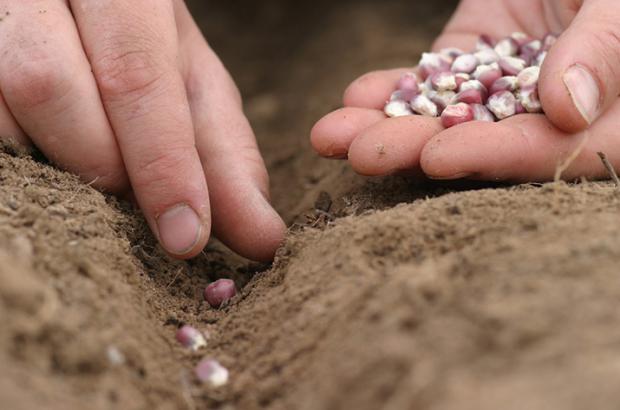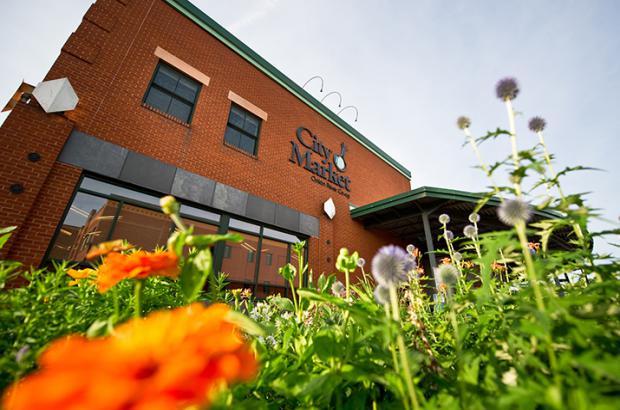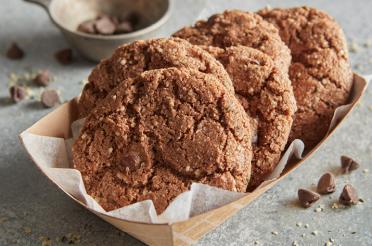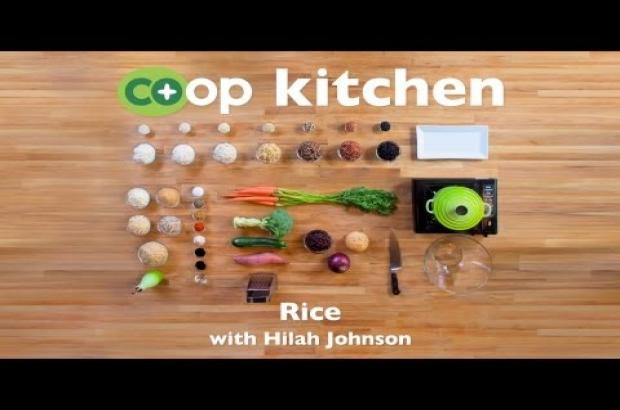Article
The Benefits of Seeds
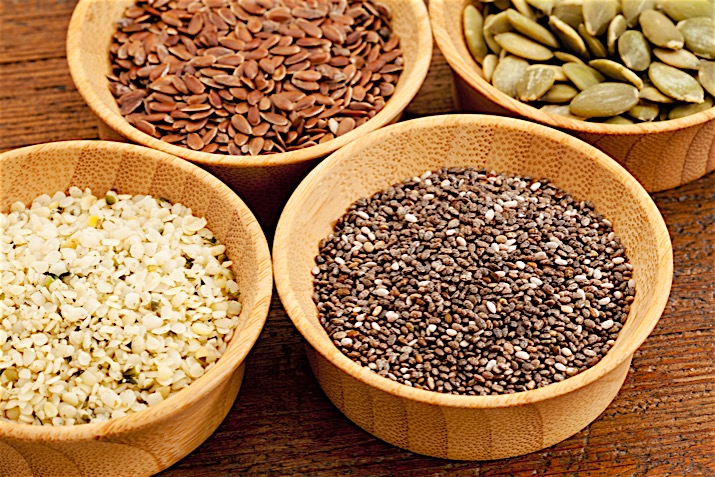
Seeds are an amazing food. Each seed contains the potential to sprout and grow into a plant—a plant that will mature and produce more seeds, which will sprout, mature and make more seeds. Every time we eat a seed, we are consuming the potential—all the protein, vitamins, minerals, enzymes—needed to grow an entire plant and all its future seeds.
As Joey Lawrence from the 90's sitcom Blossom would say, “Whoa.”
Seeds are found in cuisines around the globe. They stand alone as snacks and add umami and a satisfying crunch to salads, soups and desserts. Seeds can be ground into flour to thicken soups and stews or used to replace flour in baked goods. Each seed offers unique flavor and characteristics. Here are some highlights of a few mighty seeds:
Chia
Chia is Mayan for strength. Ancient Mayans consumed chia seeds to provide lasting energy on long journeys. They are a complete protein, high in fiber, omega-3 fat and antioxidants.
The texture of chia is unique. When soaked in liquid, the seeds develop a jelly-like coating that makes a thick mixture which can be used as a nutritious replacement for cornstarch or arrowroot powder in baking and puddings. Chia are composed of soluble fibers that enhance satiety and feed the beneficial bacteria in your digestive tract. My favorite way to eat chia is in pudding form—add 5-6 tablespoons to a can of warmed coconut milk. You can customize the flavor with cocoa powder, coconut flakes, pureed bananas or berries, and sweeten to taste with maple syrup or honey. Keep a toothpick handy—these seeds have an affinity for the space between teeth.
Flax
Flax are also high in fiber, which helps prevent "sugar crashes," among other benefits. Flax, along with hemp and chia, contains alpha-linolenic acid, (ALA) an omega-3 fat that may help prevent age-related diseases. Omega-3 oils are very fragile and can go rancid quickly after being exposed to air and heat. Store whole flax seeds in the fridge and grind as needed to add to breakfast cereal, yogurt, smoothies, or baked goods.
Hemp
Hemp seeds are a complete protein, which is rare in the plant kingdom. Unlike flax, you don’t need to grind hemp seeds to enjoy the benefits. Hemp seeds have a creamy texture and a mild, nutty flavor that complements grains, salads and meats. Sprinkle hemp on top of spaghetti in replacement of Parmesan cheese or substitute hemp seeds for pine nuts in pesto. Hemp seeds are also a delicious addition to grain salads, like tabouli. Store them whole in the refrigerator to preserve the GLA.
Millet
Despite millet’s fine nutritional and culinary profile, we are more familiar with it as birdseed in the U.S. In parts of India, Asia and Africa this drought-resistant, prolific crop is a culinary staple. It grows quickly and reliably, stores easily and is high in protein and B vitamins. It’s also alkaline in nature, making it very easy to digest. Like quinoa, millet is a seed grain. Creamy and nutty, it makes a naturally gluten-free substitute for couscous and pairs wonderfully with Mediterranean flavors like artichokes, sun-dried tomatoes, and fresh herbs.
Pepitas
Also known as pumpkin seeds, pepitas have a lot of potential health benefits. Like soybeans, they are a rich source of phytoestrogens, which have been shown to promote heart health and possibly prevent some types of cancer. Pepitas are also the best plant source of zinc, an essential mineral used in the immune system and especially beneficial for men’s health. Make your own pepitas by tossing cleaned seeds from pumpkins and other edible winter squashes in oil and roasting at 400°F for about 20 minutes. Toss a handful on roasted root vegetables…or right in your mouth!
Quinoa
Quinoa is a seed although it is often referred to as a grain. It was first cultivated in the harsh conditions of the Andes Mountains where it remains a staple of Peruvian and Bolivian cuisine. Quinoa is a nutritional powerhouse, packing high-quality plant protein, B vitamins, essential minerals and antioxidants like vitamin E that combat "free radicals" or the environmental and dietary pollutants that cause cell damage. Add a handful or two of rinsed quinoa to brothy soups in the last 20 minutes of cooking to add nutty texture. Quinoa also makes a hearty and delicious breakfast cereal when cooked in coconut milk and topped with dried fruit and other seeds, like chia, hemp and sesame.
Sesame
These crunchy little seeds are one of the oldest condiments. Mixed with sea salt to make Japanese gomasio or roasted and ground into a Middle Eastern staple, tahini, sesame has found a home in cuisines around the world. The seeds are rich in the anti-inflammatory mineral, copper, and contain a unique chemical called sesamin which protects the brain and liver from oxidative damage. The oil in these seeds is susceptible to rancidity so store them whole in the fridge to add to stir-fried veggies, sauteed kale or other leafy greens.
Sunflower seeds
When you root for the home team, you’re not just celebrating sunflower seeds as a fantastic baseball snack, but as a plant native to North America. Sunflowers were cultivated by American Indians in the southwest even before corn. They used the seeds for food, dye and medicinally to treat snake bites. Like olives, sunflower seeds contain oleic acids, a monounsaturated fat that lowers cholesterol. Sunflower seeds also contain tryptophan, the amino acid required to synthesize serotonin. Try raw sunflower butter as an allergy-free, B vitamin-rich replacement for peanut butter on crackers and apple slices.


